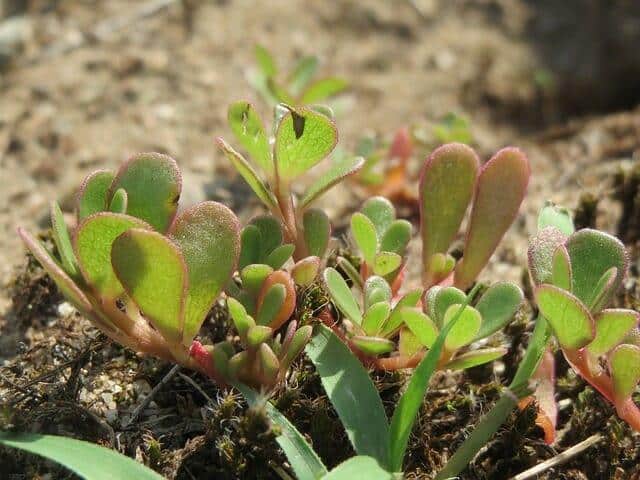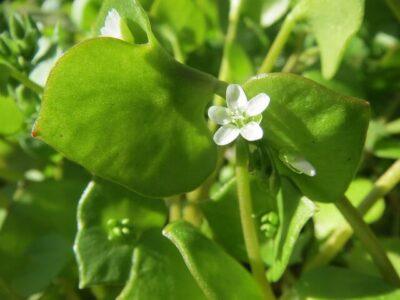It grows everywhere, and it’s persistent in its growing. But many homeowners rip the plant out of their gardens, yards and walkways without a second thought.
It is purslane. You may not even know its name, yet you certainly have seen it growing.
This little weed, though, actually is a beneficial herb. It is native to Asia, popular in the Mediterranean, and is a typical hot-weather herb. It does not like frost, and will not grow until the soil is warm, usually in May. It is drought-resistant, probably because it retains water in its tube-like stems.
When examining the leaves of purslane, you will notice they are fleshy and green, with red stems and bright yellow flowers. The leaves are thick and smooth, with a paddle shape, and are about one and a half to two inches long.
Purslane is remarkably high in omega-3 fatty acids – which can help lower bad cholesterol — and contains more of it than any other leafy green. It also has calcium, iron, potassium and magnesium. Additionally, it is high in vitamins A and C and pectin, the latter of which can lower bad cholesterol, too.
Just 30 Grams Of This Survival Superfood Provides More Nutrition Than An Entire Meal!
Not bad for something you usually yank out of the garden!
Planting Your Own Purslane
If you don’t have purslane in your yard, you can grow it. You will have to find it first! In its wild state, purslane grows in a flat, circular, horizontal position of up to 16 inches across. You also can simply buy seeds from a garden center.
If you are harvesting wild purslane, stay away from plants growing by the road or where chemicals have been sprayed. You will want to find the most organic and healthy plants possible.
When you find a plant, you can collect some seeds. If you would rather deal with seedlings, then cut a couple of stems. Sowing the seeds is quite easy. Simply scatter the seeds over the prepared soil. You don’t need to cover them; let them sit on the surface, as they need sunlight to germinate. If it makes you feel better, spread a thin layer of soil over the seeds.
Purslane cuttings can be laid on the soil, after which you can water the stems. They should take root after a few days. It is a care-free plant once it starts growing.
Purslane is an annual and takes four to six weeks to fully mature. It usually reseed itself, but you can gather seeds just to be safe. It likes partly sunny, to full sun areas.
The soil type doesn’t seem to matter too much to this plant, but the ground needs to be clear and recently turned. Purslane likes the combination of moisture and heat, and it does well during wet summers.
Harvest it regularly or it can become invasive in your garden. (Harvest before it flowers to control its spreading.)
Using Purslane
It has a crunchy and lemon or citrus-like taste. The last inch or two of the plant is the most delicious, so when you gather it to eat, make sure you get the whole plant — the stems and the leaves. If you are trying to thin out a patch, simply pull it out by the roots. Keep it cool until you can wash and trim it.
Purslane goes well in salads and can be used as garnishes or in sandwiches (preferably by using the tender, young leaves).
You can use it to substitute for spinach or watercress, as well as to thicken stews or soups.
Make your own pesto by combining these ingredients:
- Purslane, with stems and all.
- Olive oil.
- Garlic.
- Pine nuts.
- Hot watercress.
Blend thoroughly.
Whether you want to call purslane a weed or an herb, there is no denying the healthy benefits of this often-overlooked plant.
Do you eat purslane? What advice would you add? Share your thoughts in the section below:
 Off The Grid News Better Ideas For Off The Grid Living
Off The Grid News Better Ideas For Off The Grid Living





